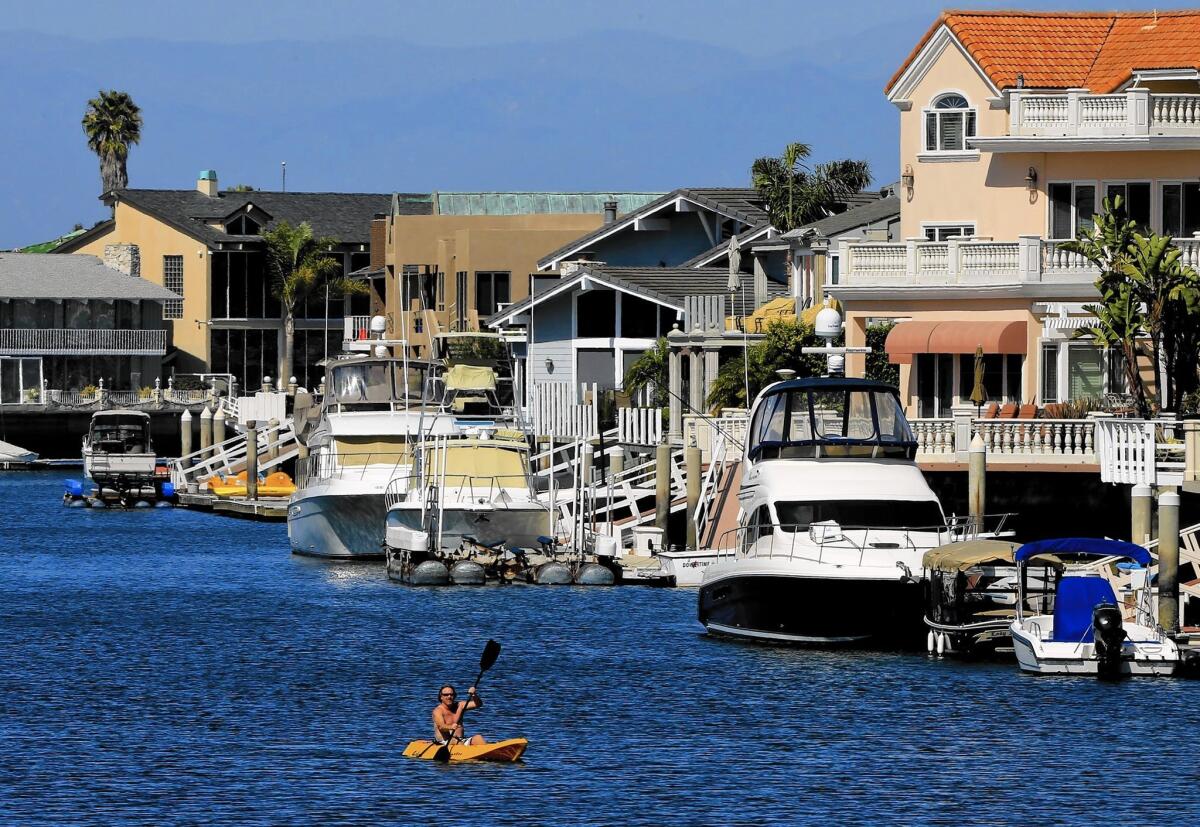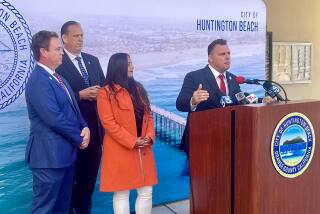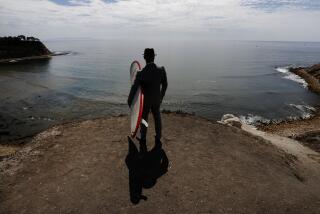Sediment from O.C. dredging project will help restore beach sand and a marsh

Some of the sediment to be removed from Huntington Harbour during a county dredging project will end up helping restore a marsh in Seal Beach and the sand at Sunset Beach and Surfside.
By the end of December, a contractor hired by Orange County Parks will begin dredging sediment in several parts of the harbor to level off the height of the sea floor, with most of the work near the main entry channel along the Seal Beach and Huntington Beach border.
A few residents told officials during a town hall meeting last week at the Harbour View Clubhouse that their boats have gotten stuck in sediment in the channel entrance and other spots in the harbor.
The county most recently dredged the harbor in 2001, removing about 96,000 cubic yards of sediment.
Susan Brodeur, senior coastal engineer for O.C. Parks, said the county is looking to remove about 197,000 cubic yards of sediment during this project. The county has hired Curtin Maritime to perform the dredging.
Of that total, about 109,000 cubic yards will be taken out of the channel’s entrance, Peter’s Landing and the Sunset Aquatic Marina. An additional 23,000 cubic yards will be removed from the Bolsa Channel and the Bolsa sediment trap.
The county also will remove about 48,000 cubic yards from the eastern main channel near the Huntington Yacht Club.
Huntington Beach officials caught wind of the project and asked whether the county would be willing to help the city with its plans to install a 16-inch-diameter water pipe between Typhoon Lane on Trinidad Island and Grimaud Lane near Peter’s Landing.
In October, the city and county agreed to dredge 7,000 cubic yards to enable city public works crews to install the pipe to provide an emergency water line to Trinidad Island, said Duncan Lee, a city water engineer.
Lee said the city expects to install the pipe in April or May.
The county dredging project is expected to be completed by May, said Steven Chew, operations manager with Curtin Maritime.
Sediment collected from the dredging will be placed at various locations. About 129,300 cubic yards will be disposed of at an Environmental Protection Agency-approved site off the coast near San Pedro, and 47,000 cubic yards will be used to replenish the sand at Sunset Beach and Surfside.
About 13,500 cubic yards will be used to help restore the salt marsh at the Seal Beach Naval Weapons Station, and 7,000 cubic yards will be used to backfill the trench where the city is installing its water pipe.
Though the city and county will partner to complete their projects, both will pay their respective costs. The price of the county’s project is estimated at $7.2 million, while the city’s is estimated to cost $840,416.
The county is receiving grants from state and federal agencies to help pay for the dredging. The state Coastal Conservancy is issuing a $550,000 grant, while the U.S. Fish and Wildlife Service and state Department of Fish and Wildlife are donating $350,000 and $125,000, respectively.
Twitter: @acocarpio
Carpio writes for Times Community News.
More to Read
Get the Latinx Files newsletter
Stories that capture the multitudes within the American Latinx community.
You may occasionally receive promotional content from the Los Angeles Times.







